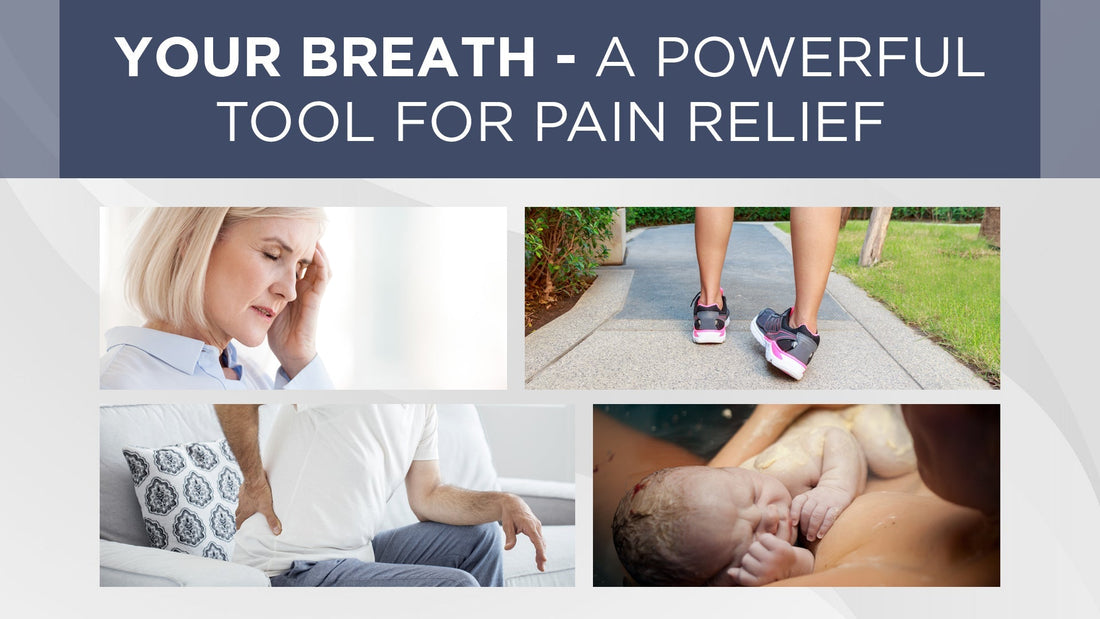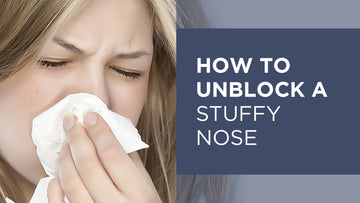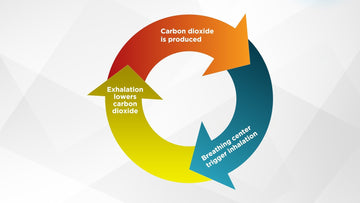
Your Breath - A Powerful Tool For Pain Relief
Our breathing is a severely underestimated tool in pain management. How we breathe has an immediate effect on pain and by altering our breathing pattern, we can either increase or reduce pain. Improving your breathing habits give you access to a powerful tool for pain relief. Conscious Breathing is used with great success both in more acute pain at the dentist, during childbirth, and lumbago as well as in fibromyalgia and long-term chronic pain.
Below are a few examples of how we normally react to unpleasant situations such as pain, fear, and shock, and how we can avoid these experiences.
Shock – cold shower tense us up

Imagine that you step into a cold shower. Your immediate reaction is to gasp and quickly draw in your breath. Since your body is tensed up, you either hold the breath at the top of your chest, or breathe quickly and shallowly in an effort to endure the spray of cold water. It’s not a particularly pleasant experience, and we tend to want it to be over as quickly as possible.
However, you would have a much more pleasant experience if you made it a point to breathe rhythmically in and out of your nose as you entered the cold shower. Although I don’t profess to love getting under cold water, in the interests of research, I have had many cold showers. The effect that the cold water has on me is significantly different when I breathe rhythmically as compared to when I hold my breath.
At the dentist we hold our breath in fear

The same applies when you become tense before an injection or when sitting in the dentist’s chair. Holding your breath will only encourage your body to become like a taut violin string as you anticipate the coming pain, and because you are tense, it will hurt more. However, if you take control of your breathing the experience will be completely different. Despite having to keep your mouth wide open when you visit the dentist, it’s perfectly possible to breathe regularly and deeply, in and out through your nose, which will not only allow you to stay calm, but also help you avoid having the fear of pain take over.
Conscious Breathing breaks a vicious circle
Fear makes us tense and hold our breath and we are all familiar with the reaction – “Phew, the danger is over, now I can relax and exhale”, and we let go of the air in a sigh of relief. An expression used in connection with childbirth is the “fear–tension–pain” cycle. Women who give birth are often worried about the process, so they become tense. A tense body leads to increased pain, which promotes even more fear and tension. Our natural response to feeling scared and tense is that our breathing pattern alters due to bodily reflexes, and we hold our breath in order to wake our bodies up. Or, we breathe shallowly high up in our chest in an attempt to “run away” from the unpleasant feelings often situated in our abdominal area.

We can either increase or decrease pain simply by using our breath. When we get tense, pain increases. Applying Conscious Breathing will relax our body and diminish the pain. Try it for yourself. The next time you’re feeling pain, start breathing slowly, rhythmically and deeply down into your abdomen and notice how the pain diminishes.
Shallow breathing can lead to neck pain and tension headache

When we breathe high up in our chest, we over use the breathing muscles in our chest, neck and throat. Because these muscles are not designed to constantly be active, they tire easily and become tense, which contributes to the common problem of tension in the neck and shoulders. Since these muscles continue up in our head, the shallow breathing can also lead to tension headaches. The solution: Extending your exhalation slows down your breathing and allows it to reach further down in your abdomen, thereby releasing tension and reducing pain.
The connection between fibromyalgia and poor breathing habits
Fibromyalgia is characterized by tired, stiff muscles and muscle pain. There are several breathing characteristics related to fibromyalgia. The most common are:
- Breathing issues. 50% percent of people who are diagnosed with fibromyalgia say they have breathing problems.
- Infections in the respiratory tract. Mycoplasma is a bacterial infection of the lungs. In 50% of cases where people have been diagnosed with fibromyalgia, a mycoplasma infection has also been present. Breathing through the mouth increases the number of bacteria in the lungs, and shallow breathing impairs the circulation of air in the lungs. Both ways of breathing increase the risk of airway infections.
- Insomnia. 70% of fibromyalgia sufferers experience sleeping problems, e.g. poor sleep and/or waking up tired and stiff in the morning. If the mouth is also dry then it’s highly likely that you also breathe through your mouth during the night. Mouth breathing at rest automatically means that you are over-breathing (hyperventilating).
Impaired breathing habits and pain – women at risk

Fibromyalgia is nine times more prevalent in women than in men, and as we saw above there is a close connection between fibromyalgia and impaired breathing habits. Women are at risk of developing poor breathing patterns which contributes to the problem with fibromyalgia and pain being so much more common in women:
- Menstruation. The secretion of the hormone progesterone increases in the second half of a woman’s cycle—i.e., after ovulation and up to menstruation. Progesterone induces increased respiration, which can eventually lead to permanent changes in the breathing pattern.
- Pregnancy. Once an egg is fertilized and a woman is pregnant, the high levels of progesterone in her body will continue to remain high for the rest of her pregnancy. As the growing fetus forces her breathing higher up in the chest, it becomes increasingly harder to breathe deeply. Since shallow breathing is an ineffective way of breathing, her respiration rate will increase to compensate.
- “Good girl”. From an early age, women tend to put a lot of pressure on themselves, leading to the “good girl syndrome”. When we are constantly trying to perform, we tend to hold our breath more and more and we either “forget” to exhale, or we breathe shallowly and fast.
- Stomach in. To have a big belly is considered by many to indicate authority, provided the extra weight is on a man. However, having a stomach that protrudes is definitely not considered suitable for a woman. Hence, many young girls are taught from an early age to pull their stomach in. However, this action forces the breath high up in the chest and makes it shallow and fast.
- Wearing a tight bra. Wearing a bra that is too tight can make it difficult to breathe deeply, which often leads to breathing that is shallow and high up in the chest.
Reduce inflammations with improved breathing

Inflammation is partly caused by free oxygen radicals that are constantly produced in your body. The reaction is the same as the oxidation reaction that causes metal to rust or an apple slice to turn brown when exposed to oxygen. Free radicals are a necessary part of the immune system because they are needed to destroy malignant organisms and faulty cells. Acute inflammation is your immune system’s normal response to physical or chemical stress that needs to be healed and repaired. But when acute inflammation fails to achieve the desired effect, chronic inflammation and an increase in free oxygen radicals is the result.
Chronic inflammation is an abnormal condition, which is common in pain. In studies where inflammatory chemicals were administered, fever, aches, and fatigue were the result. The transition from acute to chronic inflammation can occur due to continued physical or chemical stressors such as smoking, unhealthy diet, infection or over-breathing. Over-breathing increases the amount of oxygen that circulates freely in the blood because we inhale more oxygen than we actually consume. This increases the risk of free radicals being formed in the blood.
So, oxygen can be viewed as both a curse and a blessing. Too little oxygen and we die. And if we get too much, the amount of free radicals increases, which speeds up ageing. This is why there is a lot of discussion about the importance of antioxidants. But while antioxidant rich food, that protects against free radicals, is great, it would be even better to go directly to the source and improve our breathing habits so that the free radicals aren’t formed in the first place.
This article is based on Conscious Breathing.







